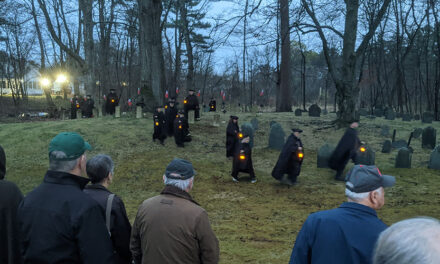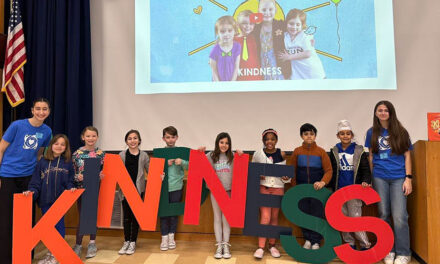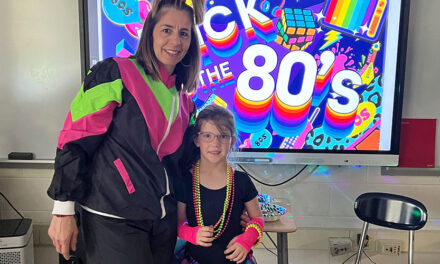Published in the November 22, 2016 edition
By DAN TOMASELLO
LYNNFIELD — The Class of 2016’s SAT scores decreased slightly but the scores remain similar to previous years, High School Principal Bob Cleary told the School Committee last week.
Before the SAT was revamped earlier this year, students were graded on three different areas on the exam — critical reading, writing and math for a combined score of 2400. The Class of 2016’s average mean score for all three areas was 1618. The Class of 2015’s average mean score was 1643.
“We are pleased with our overall performance but I don’t think we are ever satisfied with it,” said Cleary. “We are always looking to see what we can do to improve.”
The data revealed the average critical reading score decreased by seven points, from 537 to 530. The average writing score was 541, representing a three-point decrease from the Class of 2015’s average score of 544.
While Cleary noted Lynnfield High School’s SAT critical reading and writing scores “are down a few points from last year,” he said the scores are higher than 2013 and 2014’s scores.
“It looks like the numbers are trending upward,” said Cleary. “When you look at the time and effort we put in the last few years with the English language arts curriculum review, we think we are starting to reap the benefits.”
Cleary noted the high school has implemented several different strategies to help students improve on the SAT critical reading and writing exams including incorporating timed writing assignments into classes.
“We recognized a few years ago we were putting our kids at a disadvantage because we spent so much time working on MCAS writing and the five paragraph, no timed restraint essay,” said Cleary. “The English department did a nice job incorporating more timed writing assignments. We feel that has made a difference when you look at increases in our writing and reading comprehension scores. We are pretty happy with what has gone on there but there is a lot more we are still doing with our curriculum review and that is continuing.”
Cleary also said the high school switched from the Wordly Wise vocabulary program to a more “contextual vocabulary” program. He said a district-wide vocabulary improvement goal is included in the LHS improvement plan.
According to the data, the Class of 2016’s average math score was 547, representing a 15-point decrease from the Class of 2015’s average math score of 562.
“We are disappointed with our overall mean score because it has gone down but the majority of our students have been pretty consistent,” said Cleary.
According to Cleary, the math department is looking into restructuring its math curriculum. In an email sent to the Villager, Math Department Head Marylou Sambatakos said the math department will be making changes to the high school’s Geometry course.
“Since students have seen Geometry at the middle school, we are changing the Geometry course, a freshman course, and making it more of an integrated course of Geometry and Algebra 1,” said Sambatakos. “As a result, the following year, students will begin their Algebra 2 studies with Algebra 2 concepts, rather than a review of Algebra 1 concepts. The new SAT has a major focus of the ‘heart of algebra,’ and we will continue to examine the placement of certain Algebra 2 topics and/or Pre-calculus topics in our junior and senior courses.”
Cleary also presented average SAT mean score data from area communities Hamilton-Wenham, Masconomet, North Andover, North Reading, Rockport, Swampscott and Wakefield. The high school’s average SAT critical reading score was higher than North Andover, Swampscott and Wakefield but was lower than Hamilton-Wenham, Masco, North Reading and Rockport.
The high school’s average SAT writing score was higher than North Andover, Rockport, Swampscott and Wakefield but was lower than Hamilton-Wenham and Masco. North Reading’s average writing score was 541, which was the same as Lynnfield’s.
According to the data, the high school’s average SAT math score was higher than North Andover, Rockport, Swampscott and Wakefield’s scores, but was lower than Hamilton-Wenham, Masco and North Reading.
Cleary said the high school’s average mean SAT scores are consistent to previous years.
“We say it every year that it is tough to compare year-to-year because it’s a different group of kids,” said Cleary. “When you look at our mean scores, it’s not the best indicator because it can be raised or lowered by a couple of different students in the high or lower range. Although we are not always happy when the mean score goes down, you are not seeing a major drop. If we are averaging in the 540 to 560 range and we have a year where our median score is 490, then I would be really concerned. We know we are on the right track even though we haven’t perfected it but we are looking to improve those scores and get where we need to be.”
The data revealed eight members of the Class of 2016’s critical reading scores were between 700-800. There were 10 students whose SAT writing scores were between 700-800. There were 10 students whose SAT math scores were between 700-800.
Additionally, there were 33 students whose SAT critical reading scores were between 600-690. There were 38 students whose SAT writing scores were between 600-690. There were 32 members of the Class of 2016 whose SAT math scores were between 600-690.
The data revealed 50 members of the Class of 2016 received SAT critical reading scores between 500-590. There were 50 members of the Class of 2016 who received scores between 500-590 on the SAT writing exam. There 64 members of the Class of 2016 whose SAT math scores were between 500-590.
According to the data, 41 members of the Class of 2016 received scores between 400-490 on the SAT critical reading exam. There were 34 students who received 400-490 scores on the SAT writing exam. There were 28 students who received 400-490 scores on the SAT math exam.
Cleary said high school officials are concerned about the increase in the number of students receiving scores in the 300-390 range. He said 15 members of the Class of 2016 received scores in the 300-390 range on the SAT critical reading exam, which is seven more students than the Class of 2015. He said 13 students received scores between 300-390 on the SAT writing exam, which is eight more students than the Class of 2015. He said there were 12 students who received scores between 300-390 on the SAT math exam, which is four more students than 2015.
“Those are typically kids who struggle with standardized testing,” said Cleary. “We are looking to boost those scores.”
With the new SAT launched, Cleary said it will be difficult to compare future classes’ scores with scores from the old SAT.
“We are starting from square one next year,” said Cleary.
SC reaction
In response to a question from School Committee Chairman Tim Doyle, Cleary said some curriculum changes are “in the works” while other initiatives will take place over the next few years.
Doyle also inquired if high school officials have looked at ways to move the number of students in the 400-500 range to the 500-600 range.
While the state releases the results from individual MCAS questions, Cleary said when College Board releases SAT scores to high schools; the results do not contain a “breakdown” of the exam’s questions.
“We clearly recognize who those kids are,” added Cleary. “We have added some SAT prep into some of our CP (college prep) classes. We are also doing that in our MC (math connections) classes. We are also looking at our PSAT data, which does give us some more structure. That has been helpful but we have not seen that glaring ‘this is what we are missing.’”
Cleary also said evaluating sophomores’ PSAT scores can be “a little misleading” because sophomores have not yet learned all of the content covered in the exam.
“Some of that data is not all that useful but some of the general trends we can look at has been helpful,” said Cleary.
School Committee member Jamie Hayman asked why 8 percent of high school students did not take the SAT exam last year.
Cleary said most of the students who don’t take the SAT don’t because they are entering the workforce, enlisting in the military or enrolling at a community college.
“If you look at 8 percent and there are 150 kids in the class, you are talking about 10 kids,” said Cleary. “Sometimes 8 percent sounds like it’s more than it is.”
Guidance Department Head Mike Moresco noted there are a few students who are only applying to “test optional” colleges.
“There used to be 50, but there are now 350 schools,” said Moresco. “Those students are in the minority.”
Hayman said he appreciated Cleary and Moresco’s responses but aired concerns about the SAT scores.
“The impetus of my question is not why 8 percent are not taking the SAT,” said Hayman. “It’s trying to understand the noise around the numbers. On the surface, I look at these and they should be better. I want to see these better.”




